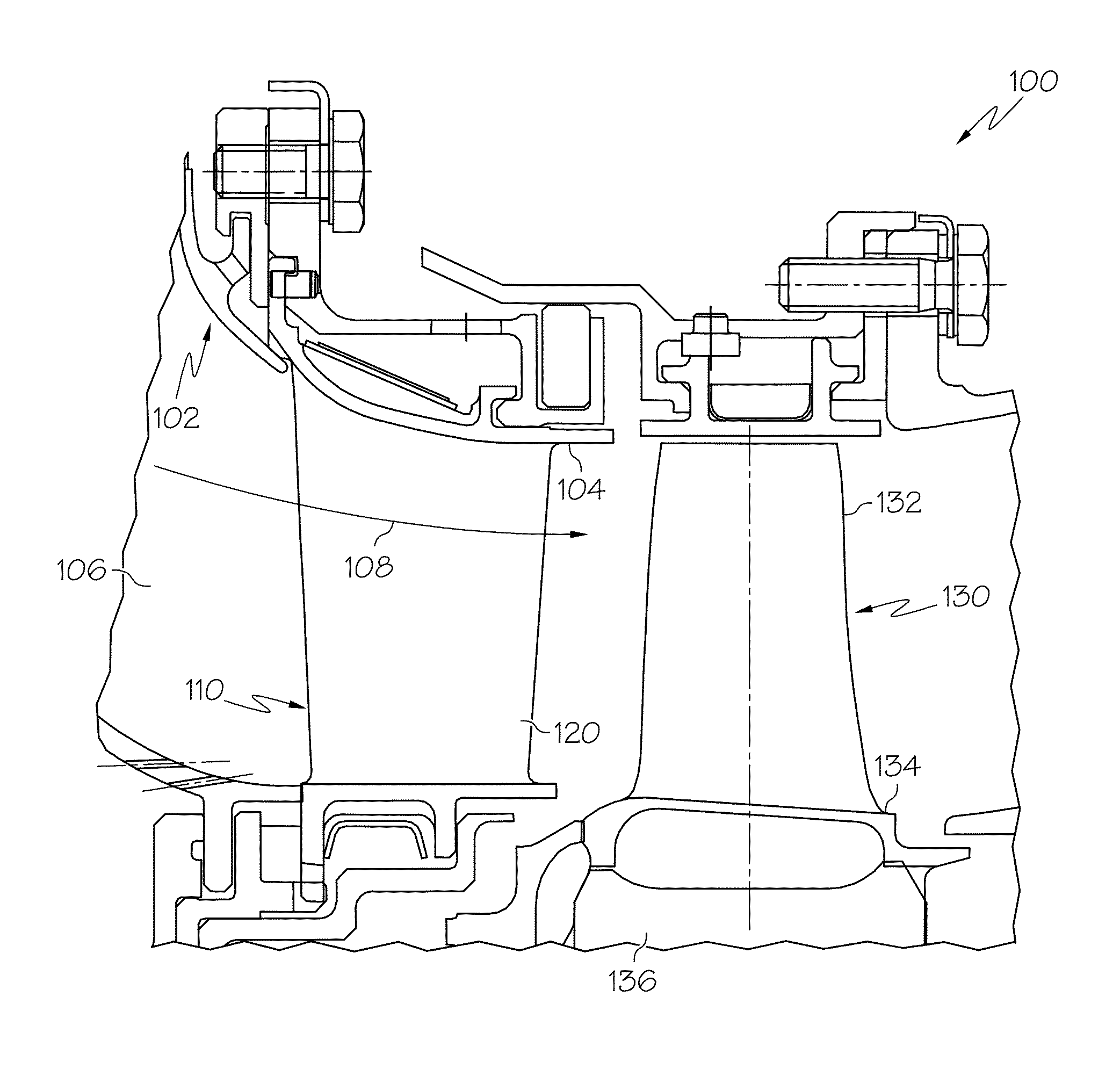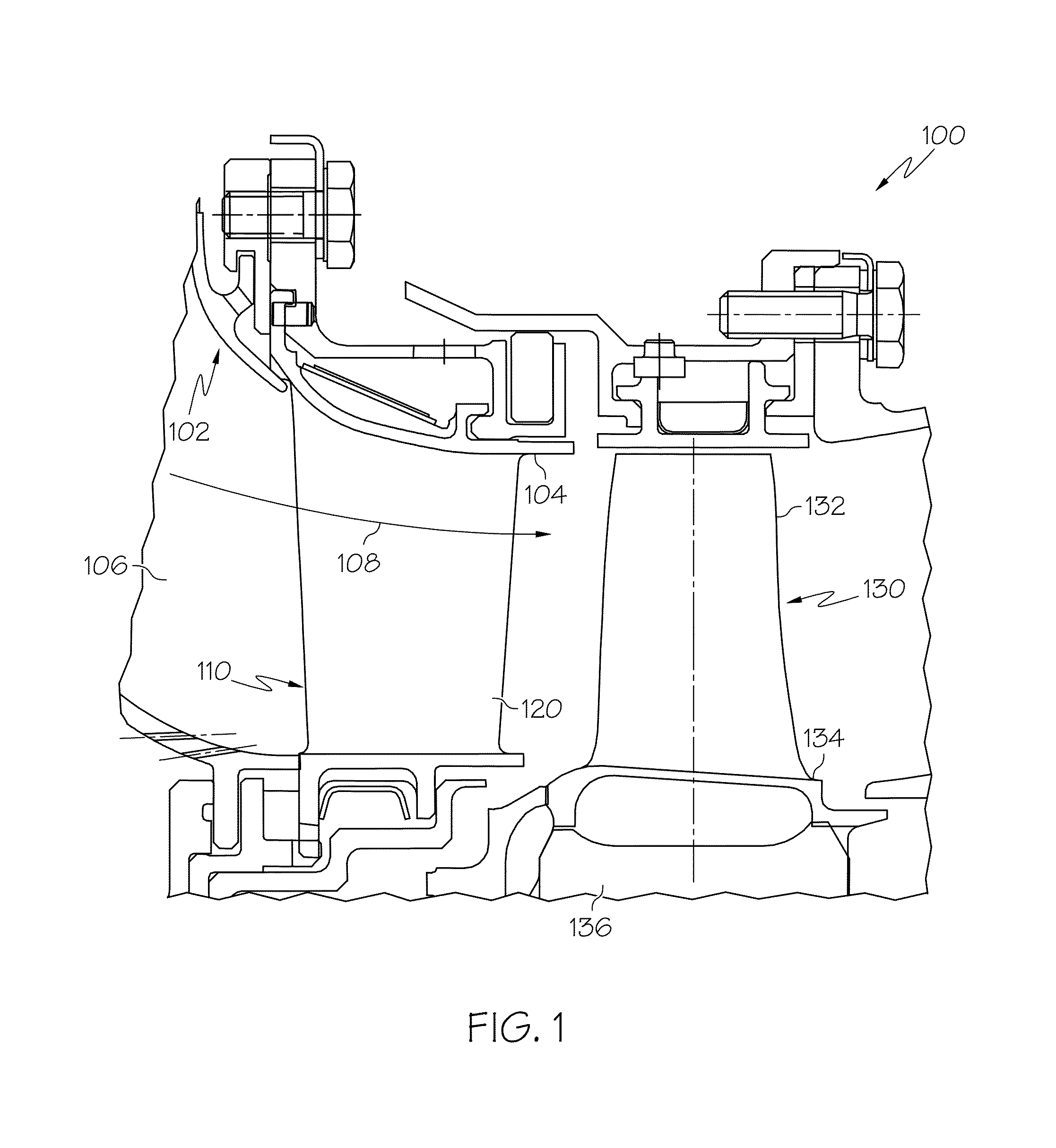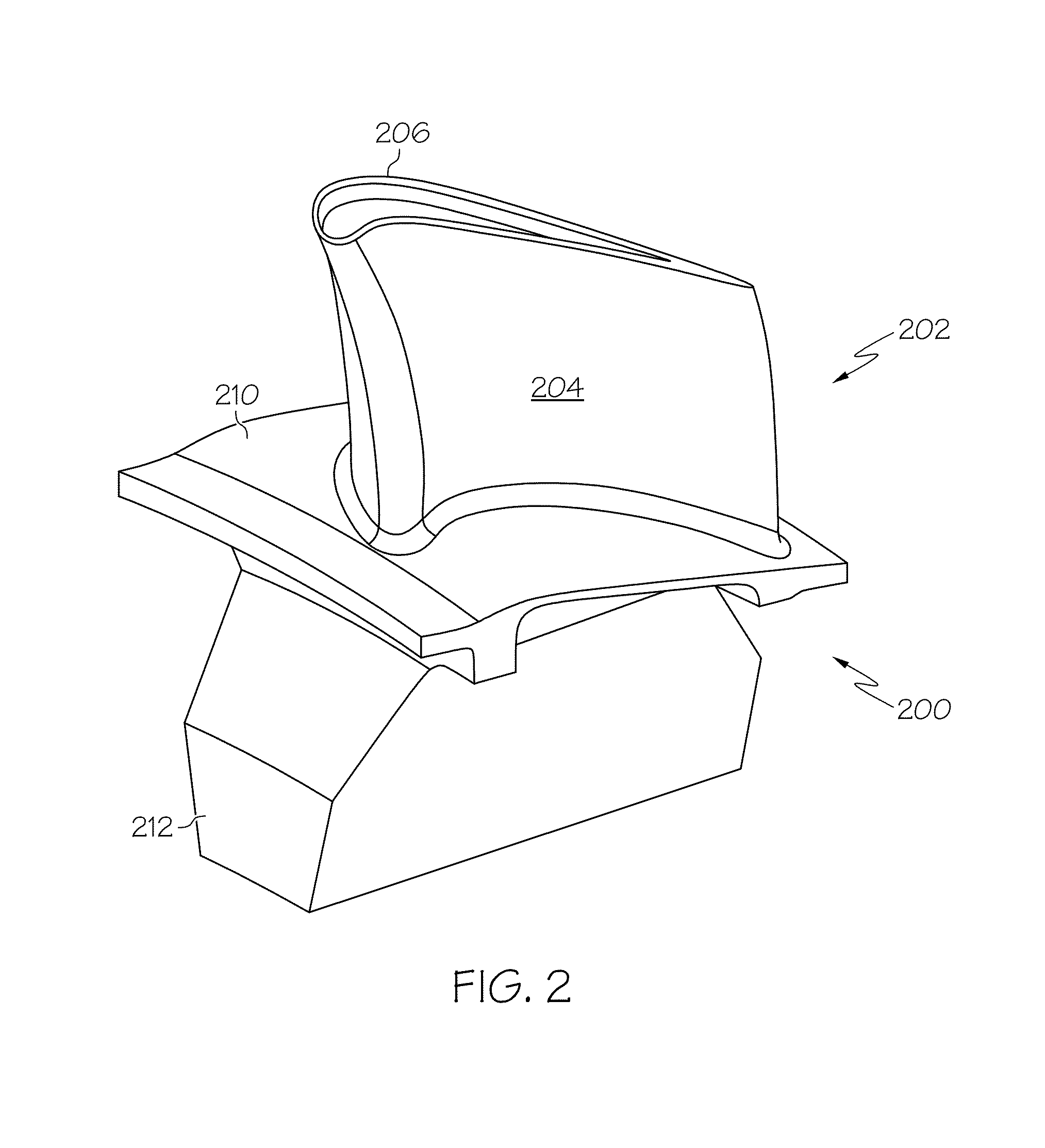Methods for manufacturing components from articles formed by additive-manufacturing processes
a technology of additive manufacturing and manufacturing components, which is applied in the direction of machines/engines, solid-state diffusion coatings, turbines, etc., can solve the problems of low yield, long lead-time, and high cost of conventional methods, and achieves high surface roughness, structural integrity and mechanical properties of components
- Summary
- Abstract
- Description
- Claims
- Application Information
AI Technical Summary
Problems solved by technology
Method used
Image
Examples
example
[0067]The following example is provided for illustration purposes only, and is not meant to limit the various embodiments of the present invention in any way. In the following example, an aluminide diffusion coating is formed on an internal surface of an exemplary turbine article (an HP turbine blade) formed from a DMLS additive manufacturing process using high temperature, high strength nickel-based superalloys (MM247 and IN738), in accordance with exemplary embodiments. FIGS. 14-17 are images of the exemplary turbine article or portions thereof As shown in FIG. 14, the turbine article has both internal passage surface roughness and defects (the internal surface referred to by reference element 304a) and external surface (304b) roughness and defects. FIG. 15 is an image of the turbine article of FIG. 14 after encapsulation and HIP processing. The external surface 304b was conventionally polished prior to encapsulation and HIP processing to eliminate the external surface roughness a...
PUM
| Property | Measurement | Unit |
|---|---|---|
| thickness | aaaaa | aaaaa |
| thickness | aaaaa | aaaaa |
| temperatures | aaaaa | aaaaa |
Abstract
Description
Claims
Application Information
 Login to View More
Login to View More - R&D
- Intellectual Property
- Life Sciences
- Materials
- Tech Scout
- Unparalleled Data Quality
- Higher Quality Content
- 60% Fewer Hallucinations
Browse by: Latest US Patents, China's latest patents, Technical Efficacy Thesaurus, Application Domain, Technology Topic, Popular Technical Reports.
© 2025 PatSnap. All rights reserved.Legal|Privacy policy|Modern Slavery Act Transparency Statement|Sitemap|About US| Contact US: help@patsnap.com



